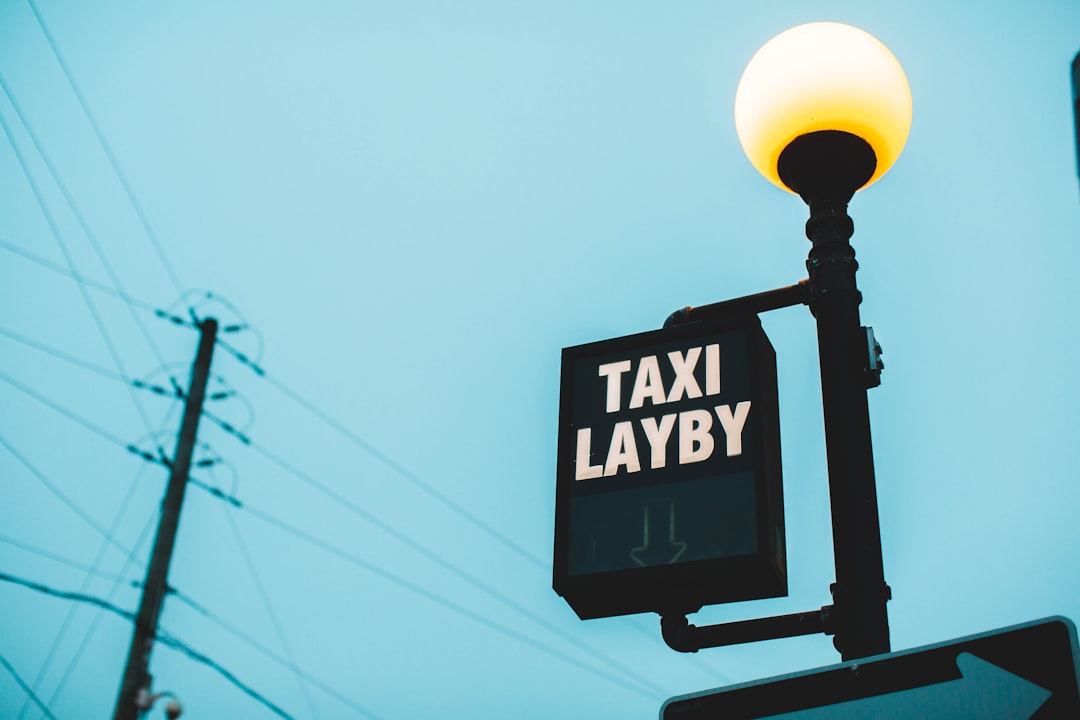Smart Money Moves for Nomads Including Health and Travel Insurance Choices

Introduction
Living a location‑independent life can feel like a perpetual adventure. The freedom to work from a beachfront café, a mountain lodge, or a bustling co‑working space is intoxicating, but the reality of managing money on the move often hides behind the excitement. Without a solid financial framework, a sudden health issue, an unexpected flight cancellation, or a currency shock can turn a dream trip into a stressful scramble.
This guide pulls together the most practical money moves for digital nomads, with a special focus on health and travel insurance choices. It covers everything from setting up a portable banking system to understanding the tax implications of a nomadic lifestyle, and it provides a clear roadmap for selecting coverage that protects both health and travel plans.
Whether you are a seasoned wanderer who has been on the road for years or a newcomer planning the first extended stay abroad, the strategies below will help you keep your finances healthy, your risks managed, and your peace of mind intact.
Understanding the Nomadic Lifestyle
Before diving into specific financial tools, it helps to frame the unique characteristics of a nomadic life.
- Fluid residence – You may spend weeks in one country, then move on to another, often without a permanent address.
- Multiple income streams – Freelancing, remote employment, consulting, and passive income often coexist.
- Variable cost of living – Expenses can swing dramatically from a low‑cost Southeast Asian city to a high‑priced European capital.
- Regulatory complexity – Visas, work permits, and tax residency rules differ from country to country.
These factors create a set of financial priorities that differ from those of a traditional employee living in one place. A successful nomadic money plan addresses three core pillars: liquidity, protection, and compliance.
Building a Portable Financial Foundation
Choose the Right Banking Partners
A portable banking system is the backbone of a nomad’s finances. The ideal setup lets you receive payments, pay bills, and withdraw cash in multiple currencies with low fees.
Key features to look for
- No foreign transaction fees – Many U.S. and UK banks charge a 2‑3 % surcharge on purchases made abroad.
- Multi‑currency accounts – The ability to hold balances in USD, EUR, GBP, and other major currencies reduces conversion costs.
- Global ATM access – Partnerships with worldwide ATM networks (e.g., Visa Plus, Mastercard Cirrus) allow fee‑free withdrawals up to a certain limit.
- Robust mobile app – Real‑time alerts, easy currency exchange, and quick card freeze/unfreeze functions are essential for security on the move.
Popular options for digital nomads
- Revolut – Offers 28‑currency accounts, free interbank exchange up to a set limit, and a disposable virtual card feature.
- Wise (formerly TransferWise) – Provides a Borderless account with local banking details in several countries, low‑cost conversions, and a debit card that works worldwide.
- N26 – A German‑based bank with a sleek app, free ATM withdrawals in the Eurozone, and no foreign transaction fees for premium plans.
When selecting a bank, consider the jurisdictions you will spend the most time in. Some banks restrict services to residents of specific regions, so having a backup account in a different jurisdiction can prevent lockouts.
Set Up Automatic Income Flows
Consistency in cash flow is crucial when you are hopping between time zones and currencies.
- Direct deposit to your primary account – Most remote employers can deposit salaries in USD, EUR, or GBP. Use your multi‑currency account details to avoid intermediary fees.
- Payment processors for freelancers – Platforms like PayPal, Payoneer, and Stripe allow you to receive client payments in a variety of currencies. Link them to your primary banking account to consolidate funds.
- Recurring invoicing – Automate invoice generation and reminders. Many tools (e.g., FreshBooks, Wave) let you set up scheduled invoices that reduce administrative overhead.
Build a Buffer for Currency Volatility
Exchange rates can swing dramatically, especially for emerging market currencies. To protect your purchasing power:
- Keep a portion of your savings in the local currency – When you arrive in a new country, convert enough to cover the first month’s expenses.
- Use forward contracts or currency hedging services – Some fintech platforms let you lock in rates for future transfers, smoothing out cost fluctuations.
- Maintain a “rainy‑day” fund in a stable currency – USD, EUR, or CHF are traditionally safe havens that you can tap if local currency devaluation threatens your budget.
Managing Currency and Banking on the Road
Choosing the Right Card for Everyday Spending
A well‑chosen debit or credit card can save you hundreds of dollars a year in fees.
Debit cards – Ideal for withdrawing cash and paying directly from your account. Look for cards that:
- Offer fee‑free ATM withdrawals up to a monthly limit.
- Provide real‑time transaction alerts.
- Have easy replacement procedures if lost or stolen abroad.
Credit cards – Essential for building credit history, earning rewards, and providing stronger consumer protections. Choose cards that:
- Do not charge foreign transaction fees.
- Offer travel‑related benefits such as rental car insurance, purchase protection, and airport lounge access.
- Provide robust fraud detection and instant card freeze options.
Strategies to Minimize ATM Fees
- Plan withdrawals – Many cards allow a certain number of fee‑free withdrawals per month. Consolidate your cash needs to stay within that limit.
- Use partner networks – Some banks have fee‑free partnerships with specific ATM networks (e.g., HSBC in Europe, Scotiabank in Canada).
- Consider cash‑back services – In countries where cash‑back is offered at point‑of‑sale, you can obtain cash without an ATM fee.
Handling Cash in Low‑Banking Environments
In some regions, especially parts of Africa and South‑America, ATMs are scarce and card acceptance is limited.
- Carry a modest amount of local cash – Obtain it upon arrival at the airport or a reputable exchange bureau.
- Use mobile money services – Platforms like M‑Pesa, GCash, or Paytm enable cashless transactions where banks are limited.
- Leverage prepaid travel cards – Load them with the local currency in advance; they often work like debit cards but are not linked to a bank account.
Credit Cards and Rewards for Nomads
Credit card rewards can turn everyday spending into free flights, hotel stays, or even cash back.
Travel‑focused cards – Look for cards that award points on flights, hotels, and dining. Many of these cards also provide travel insurance as a perk.
Cash‑back cards – Simple and flexible, especially when you cannot predict future travel plans.
Key considerations
- Annual fee vs. benefit ratio – A high‑fee card must deliver enough travel credits, lounge passes, or insurance coverage to justify the cost.
- Acceptance in target regions – Visa and Mastercard dominate globally, while American Express may be less accepted in some markets.
- Currency conversion – Some cards apply a conversion fee on foreign purchases despite being “no foreign transaction fee” cards. Verify the fine print.
Optimizing Card Use
- Pay the full balance each month – Avoid interest charges that can quickly erode rewards.
- Allocate categories – Use a travel rewards card for flights and hotels, a cash‑back card for groceries and daily expenses, and a no‑fee card for any other purchases.
- Track rewards – Use an app or spreadsheet to monitor point balances, expiration dates, and redemption options.
Emergency Fund and Savings
Even the best‑planned itineraries can be disrupted by a medical emergency, a natural disaster, or a sudden visa change.
Size Your Emergency Fund
- Rule of thumb – Aim for three to six months of living expenses in a liquid account. For nomads, a higher buffer (six to nine months) may be prudent due to income variability.
- Currency diversification – Keep portions of the fund in both your primary currency and the currency of your current location.
Where to Store the Fund
- High‑yield savings accounts – Many online banks offer interest rates above 4 % with easy access.
- Money‑market accounts – Provide slightly higher yields and limited check‑writing capabilities.
- Short‑term CDs – If you expect to stay in one region for several months, a 3‑month CD can lock in a higher rate without sacrificing liquidity.
Accessing the Fund Abroad
- Link the fund to your primary multi‑currency account – Transfer money instantly via the bank’s app.
- Use a backup debit card – Keep a secondary card in a separate account for emergencies.
Health Insurance Options for Nomads
Health coverage is the most critical component of any nomadic safety net. The right plan protects you from costly medical bills, provides access to quality care, and often includes additional benefits such as telemedicine and mental‑health support.
Types of Health Insurance for Travelers
Short‑term travel medical insurance – Designed for trips lasting up to 12 months. Policies are typically inexpensive but may have limited coverage for pre‑existing conditions.
International health insurance (IHI) – A long‑term solution for expats and digital nomads who plan to stay abroad for a year or more. IHI plans often cover routine care, chronic conditions, and maternity, and they provide continuity of care across borders.
Hybrid plans – Some insurers blend short‑term travel coverage with longer‑term benefits, allowing you to extend coverage without a major policy change.
Key Features to Evaluate
- Coverage limits – Look for a minimum of US $100,000 in medical coverage; many reputable plans offer US $250,000 or more.
- In‑network vs. out‑of‑network – Some plans require you to use a network of approved providers. Out‑of‑network care may be reimbursed at a lower rate.
- Pre‑existing condition clauses – If you have a chronic condition, verify whether the plan covers it after a waiting period or excludes it entirely.
- Dental and vision – Often sold as add‑ons; consider these if you anticipate regular care.
- Evacuation and repatriation – Critical for remote destinations where local facilities are limited.
- Telemedicine – Virtual doctor visits can save time and money, especially when you are in a country with language barriers.
Top International Health Insurers for Nomads
- Cigna Global – Offers flexible plans with modular add‑ons, high coverage limits, and a worldwide provider network.
- Allianz Care – Known for comprehensive evacuation coverage and a strong reputation among expatriates.
- SafetyWing – Provides an affordable subscription model aimed at digital nomads, with coverage up to US $1 million.
- IMG (International Medical Group) – Offers both short‑term travel and long‑term IHI plans, with customizable options.
How to Choose the Right Plan
- Assess your health profile – List any chronic conditions, regular medications, and required specialists.
- Map your travel itinerary – Identify countries where you will spend the most time and any high‑risk destinations.
- Calculate the risk tolerance – If you are comfortable with higher deductibles to keep premiums low, choose a plan with a higher out‑of‑pocket maximum.
- Compare quote details – Use side‑by‑side comparison tools, but read the fine print for exclusions and claim processes.
- Test the customer experience – Look for reviews that mention claim turnaround times and the ease of accessing care abroad.
Managing Claims While on the Road
- Keep digital copies of all medical receipts – Scan or photograph invoices, prescriptions, and discharge summaries.
- Use the insurer’s mobile app – Most providers allow you to submit claims directly from your phone, speeding up reimbursement.
- Know the local language – Having a basic translation of key medical terms can help you explain your situation to local providers.
- Maintain a list of in‑network hospitals – Many insurers publish an online directory searchable by country.
Travel Insurance Beyond Health
Travel insurance encompasses more than medical coverage. It protects against trip cancellations, lost luggage, flight delays, and other disruptions that can drain your budget.
Core Components of a Travel Insurance Policy
- Trip cancellation/interruption – Reimburses non‑refundable prepaid expenses if you need to cancel due to illness, a family emergency, or other covered reasons.
- Baggage loss and delay – Covers the cost of replacing essential items if luggage is lost, stolen, or delayed beyond a certain period.
- Flight and travel delay – Provides a per‑hour or per‑day allowance for meals, accommodation, and transportation when a delay exceeds a defined threshold.
- Rental car damage – Optional coverage that protects you from costly collision fees when renting a vehicle abroad.
- Personal liability – Covers legal costs if you are held responsible for injury or property damage to a third party.
Selecting a Travel Insurance Provider
- World Nomads – Popular among backpackers and long‑term travelers for flexible coverage extensions and a user‑friendly claims process.
- InsureMyTrip – An aggregator that lets you compare policies from multiple insurers, useful for finding niche coverage.
- AXA Assistance – Offers comprehensive plans with strong evacuation benefits, suitable for high‑risk adventure travel.
- Berkshire Hathaway Travel Protection – Known for rapid claim payouts and a digital‑first approach.
Tips for Optimizing Travel Insurance
- Bundle with health insurance when possible – Some providers offer discounts when you purchase both policies from the same company.
- Check for pre‑existing condition waivers – Some travel policies waive medical exclusions if you purchase the plan within a certain window after booking your trip.
- Read the fine print on “cancel for any reason” (CFAR) – This optional rider allows you to cancel without a specific covered cause, but it typically costs an additional 15‑20 % of the premium and reimburses only a portion (usually 75 %) of your prepaid costs.
- Document trip costs meticulously – Keep receipts for flights, accommodations, tours, and any prepaid activities. These documents are required for a successful claim.
Combining Health and Travel Coverage
Many nomads wonder whether they need separate health and travel policies or if a single plan can cover both. The answer depends on your travel style, length of stay, and risk tolerance.
When a Single Plan Suffices
- Short‑term stays (under 6 months) – A comprehensive travel insurance policy that includes medical evacuation and outpatient care can be enough.
- Low‑risk destinations – If you are traveling to countries with robust public health systems, a travel policy’s basic medical coverage may meet your needs.
When Dual Coverage Is Better
- Long‑term residencies (over 6 months) – International health insurance provides continuity of care, routine check‑ups, and chronic condition management that travel policies typically lack.
- High‑risk activities – Adventure sports, remote expeditions, and work in hazardous environments often require specialized medical coverage and higher evacuation limits.
- Complex health needs – If you need regular specialist visits, mental‑health therapy, or prescription refills, an IHI plan with a network of providers is essential.
Strategies for Seamless Integration
- Use the travel policy for acute incidents – Rely on the travel insurer’s fast claim turnaround for emergencies like a broken ankle during a hike.
- Leverage the IHI for routine care – Schedule regular doctor appointments, lab work, and prescription renewals through the health insurer’s network.
- Coordinate benefits – Some insurers allow you to submit a claim to the health policy first, then file a secondary claim with the travel insurer for any remaining eligible expenses.
Legal Considerations and Tax Implications
Financial decisions for nomads intersect with legal residency, tax obligations, and compliance requirements. Ignoring these can lead to unexpected liabilities.
Determining Tax Residency
- Physical presence test – Many countries consider you a tax resident if you spend more than 183 days within a calendar year on their soil.
- Center of vital interests – Some jurisdictions assess where your primary economic, familial, and social ties are located.
- Statutory residency rules – Certain countries (e.g., the United Arab Emirates) grant tax‑free status to residents who meet specific visa and income criteria.
Managing Dual Tax Obligations
If you hold citizenship in a country that taxes worldwide income (e.g., the United States), you must file annual tax returns regardless of where you live.
- Foreign Earned Income Exclusion (FEIE) – U.S. citizens can exclude up to US $120,000 (as of 2024) of foreign‑earned income if they meet the bona fide residence or physical presence test.
- Foreign Tax Credit – Offsets U.S. tax liability with taxes paid to foreign governments, useful when the FEIE does not cover all income.
- Tax treaties – Many countries have agreements that prevent double taxation; consult a tax professional familiar with expatriate law.
Incorporating a Business Entity
Digital nomads who provide services to clients worldwide often benefit from forming a legal entity.
- LLC in the United States – Offers liability protection, flexible tax treatment, and ease of opening a business bank account.
- Estonia e‑Residency – Allows you to register an EU‑based company, access EU banking, and benefit from low corporate tax on retained earnings.
- Delaware C‑Corp – Attractive for startups seeking venture capital, though it brings more complex compliance requirements.
When choosing a structure, consider:
- Where your clients are based – Some jurisdictions require local invoicing or VAT registration if you exceed a sales threshold.
- Your long‑term plans – If you anticipate returning to a single country, a domestic entity may simplify future tax filings.
- Administrative burden – Maintaining a foreign corporation can involve annual filing fees, accounting costs, and legal compliance.
Record‑Keeping Best Practices
- Separate personal and business accounts – Keeps bookkeeping clean and reduces audit risk.
- Maintain digital receipts – Use cloud storage (e.g., Google Drive, Dropbox) organized by year, category, and country.
- Track mileage and travel expenses – Apps like MileIQ or TripLog help document business‑related travel for deductions.
Practical Tips for Choosing Insurance Plans
- Start with a needs assessment – List essential coverage types (medical, evacuation, trip cancellation) and rank them by importance.
- Set a budget ceiling – Determine how much you can allocate to insurance each month without compromising savings or emergency funds.
- Gather quotes from at least three providers – Use comparison sites but verify that the policy details match your needs.
- Read real‑world reviews – Look for feedback on claim turnaround times, customer service responsiveness, and coverage clarity.
- Check for exclusions that matter – Some policies exclude high‑altitude trekking, scuba diving, or pre‑existing conditions without a waiting period.
- Verify provider licensing – Ensure the insurer is authorized to sell policies in the countries you will visit.
- Consider a trial period – Many health insurers offer a 30‑day money‑back guarantee; use this to test claim processing.
Tools and Resources for Nomads
- Currency conversion and tracking – XE, OANDA, and the Wise app provide real‑time rates and allow you to set alerts for favorable movements.
- Expense management – Apps like Expensify, Mint, or YNAB help you stay on budget and categorize spending across currencies.
- Insurance comparison – InsureMyTrip, Squaremouth, and TravelInsurance.com aggregate policies for quick side‑by‑side analysis.
- Tax compliance – Tax preparation services such as TurboTax (for U.S. citizens abroad), TaxAct, and specialized firms like Greenback Expat Tax Services.
- Community support – Nomad‑focused forums (e.g., Nomad List, r/digitalnomad on Reddit) often share up‑to‑date insurance recommendations and personal experiences.
Closing Thoughts
Living as a digital nomad offers unparalleled freedom, but that freedom is only sustainable when your money and health are protected against the inevitable uncertainties of life on the move. By establishing a portable banking system, maintaining a robust emergency fund, and selecting insurance that matches the length and risk profile of your travels, you create a safety net that lets you focus on work, exploration, and personal growth.
Remember that the “best” financial setup is not static. As your itinerary evolves, revisit your banking choices, adjust your coverage limits, and reassess tax residency status. Regular check‑ins—perhaps once every quarter—ensure that your money moves as fluidly as you do, and that your health and travel insurance remain aligned with your current reality.
With the strategies outlined in this guide, you can travel confidently, knowing that you have taken smart, proactive steps to safeguard both your wallet and your well‑being wherever the road leads.
Random Posts

Top Digital Nomad Havens and Must Have Tech Gear
Discover the top digital nomad hotspots and the essential tech gear that keeps you productive on the road, from high speed internet hubs to must have gadgets for seamless work wherever you wander.
2 weeks ago

Sustainable Travel Hacks for Light Living
Discover how digital nomads can travel lighter and greener with simple hacks: minimal gear, low-waste habits, carbon-smart choices, so every adventure protects the planet.
2 months ago

Financial Freedom Guide to Residency Options and Tax Planning for Travelers
Learn how nomadic professionals can pick the right residency, handle cross-border taxes and use offshore tools to create a tax-efficient home base and achieve real financial freedom
1 month ago

Tax Residency Choices Explained for Remote Workers
Learn how remote workers can choose the optimal tax residency, avoid double taxation, and align taxes with lifestyle and income in this clear, step, by, step guide.
2 weeks ago

Your Nomadic Toolbox Apps Books Podcasts and More
Discover the ultimate nomad toolbox: top apps, books, podcasts and courses that boost productivity, simplify travel, and keep you inspired on the road.
2 months ago
Latest Posts

Essential Software Every Remote Professional Should Use
Master remote work with essential tools: instant messaging like Slack, high definition video calls such as Zoom, and asynchronous voice apps. Streamline communication, stay connected and boost productivity.
1 day ago

Mastering Remote Work Productivity for Digital Nomads and Freelancers
Learn proven habits, tools, and tactics that help digital nomads and freelancers stay focused, deliver quality work, and maintain a sustainable lifestyle while traveling the world.
1 day ago

Tech‑Friendly European Towns Perfect for Remote Living
Discover Europe’s best small towns where fast internet, affordable living and vibrant tech communities let you work remotely while soaking up historic charm, lakeside views or mountain air.
1 day ago